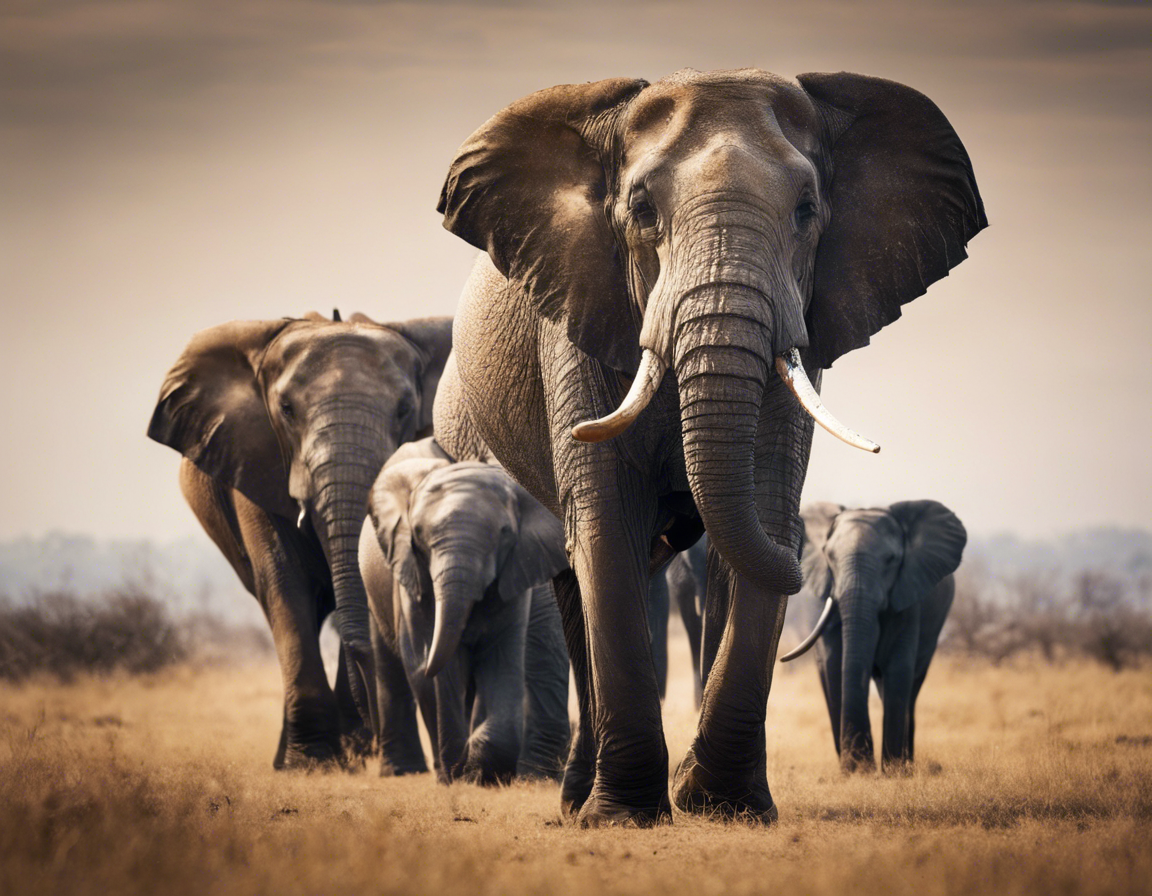Herds are a common sight in the animal kingdom, as many species exhibit social behavior and find safety in numbers. When it comes to elephants, these majestic creatures are known for their tight-knit group structures and strong social bonds. In this blog post, we will explore in depth what a group of elephants is called, delve into the dynamics of elephant herds, and discuss the significance of these groups in the wild.
The Social Structure of Elephant Herds
Elephants are highly social animals, with complex relationships within their herds. A group of elephants is commonly referred to as a “herd.” Elephant herds typically consist of related females and their offspring, led by the oldest and most experienced female known as the matriarch. The matriarch plays a crucial role in decision-making for the herd and leads her family with wisdom and authority.
Size and Composition of Elephant Herds
Elephant herds can vary in size, ranging from a few individuals to large groups of 20 or more. These herds are predominantly made up of female elephants and their young calves. Male elephants, known as bulls, tend to live more solitary lives or form temporary bachelor groups, only joining herds during mating seasons.
Communication and Social Bonds
Communication is key in elephant herds, with these animals using a variety of vocalizations, body language, and tactile cues to interact with one another. The matriarch plays a significant role in maintaining social cohesion within the herd, guiding members to food and water sources, providing protection, and teaching younger elephants essential skills.
The Importance of Herds in the Wild
Elephant herds are essential for the survival and well-being of these intelligent creatures. By living in groups, elephants can better protect themselves from predators, share knowledge about finding food and water sources, and provide emotional support to one another. The strong bonds within herds ensure the safety and development of young calves, who learn vital skills by observing and interacting with older members of the group.
Frequently Asked Questions (FAQs)
- Do all elephants live in herds?
-
While African elephants are more likely to live in herds, Asian elephants may also form small family groups led by a matriarch.
-
How long do elephant herds stay together?
-
Elephant herds are typically stable and can stay together for many years, with females often spending their entire lives within the same group.
-
What happens if a matriarch dies?
-
The death of a matriarch can have a significant impact on the herd, leading to disruptions in communication and decision-making. In some cases, another female may step up to take on the leadership role.
-
Do male elephants ever join herds permanently?
-
Male elephants usually live more solitary lives or form temporary bachelor groups. They may join herds briefly during mating seasons but do not typically become permanent members.
-
How do elephants communicate within herds?
-
Elephants communicate through a variety of vocalizations, such as trumpeting, rumbling, and growling, as well as through body language, such as ear flapping and trunk gestures.
-
What is the role of the matriarch in an elephant herd?
-
The matriarch is the oldest and most experienced female in the herd, responsible for making decisions, guiding the group to food and water sources, and ensuring the well-being of all members.
-
How do elephant herds protect themselves from predators?
-
Elephant herds have a strong defense mechanism where they circle around calves and face outward, using their size and tusks to ward off potential threats.
-
Are there any rituals or traditions within elephant herds?
-
Elephant herds have been observed engaging in mourning rituals for the dead, where they may touch the remains of deceased members with their trunks and show signs of grief and sadness.
-
How do elephants establish hierarchy within herds?
-
Elephants establish hierarchy through subtle cues, body language, and physical interactions. The matriarch maintains her authority through experience, knowledge, and leadership skills.
-
What is the average lifespan of an elephant in a herd?
- Elephants have long lifespans, with individuals in the wild living up to 60-70 years. The presence of a strong social structure within herds contributes to the well-being and longevity of these animals.
In conclusion, the bond between elephants within herds is not only essential for their survival but also reflects the intricate social dynamics and emotional intelligence of these remarkable animals. By understanding the significance of elephant herds and the role of the matriarch, we can gain a deeper appreciation for these gentle giants and their complex social structures in the wild.
